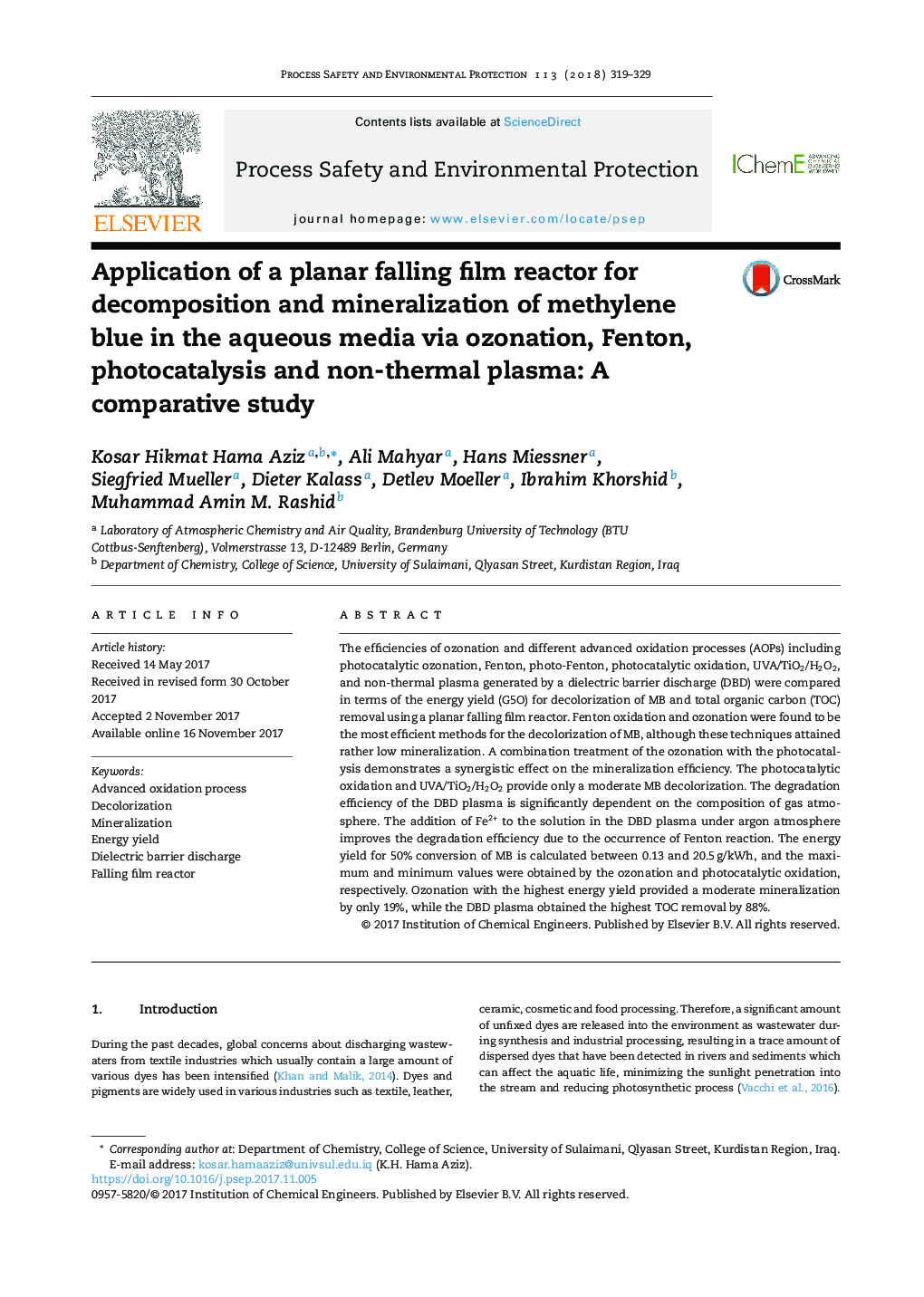| Article ID | Journal | Published Year | Pages | File Type |
|---|---|---|---|---|
| 6974275 | Process Safety and Environmental Protection | 2018 | 11 Pages |
Abstract
The efficiencies of ozonation and different advanced oxidation processes (AOPs) including photocatalytic ozonation, Fenton, photo-Fenton, photocatalytic oxidation, UVA/TiO2/H2O2, and non-thermal plasma generated by a dielectric barrier discharge (DBD) were compared in terms of the energy yield (Gâ
â) for decolorization of MB and total organic carbon (TOC) removal using a planar falling film reactor. Fenton oxidation and ozonation were found to be the most efficient methods for the decolorization of MB, although these techniques attained rather low mineralization. A combination treatment of the ozonation with the photocatalysis demonstrates a synergistic effect on the mineralization efficiency. The photocatalytic oxidation and UVA/TiO2/H2O2 provide only a moderate MB decolorization. The degradation efficiency of the DBD plasma is significantly dependent on the composition of gas atmosphere. The addition of Fe2+ to the solution in the DBD plasma under argon atmosphere improves the degradation efficiency due to the occurrence of Fenton reaction. The energy yield for 50% conversion of MB is calculated between 0.13 and 20.5Â g/kWh, and the maximum and minimum values were obtained by the ozonation and photocatalytic oxidation, respectively. Ozonation with the highest energy yield provided a moderate mineralization by only 19%, while the DBD plasma obtained the highest TOC removal by 88%.
Keywords
Related Topics
Physical Sciences and Engineering
Chemical Engineering
Chemical Health and Safety
Authors
Kosar Hikmat Hama Aziz, Ali Mahyar, Hans Miessner, Siegfried Mueller, Dieter Kalass, Detlev Moeller, Ibrahim Khorshid, Muhammad Amin M. Rashid,
